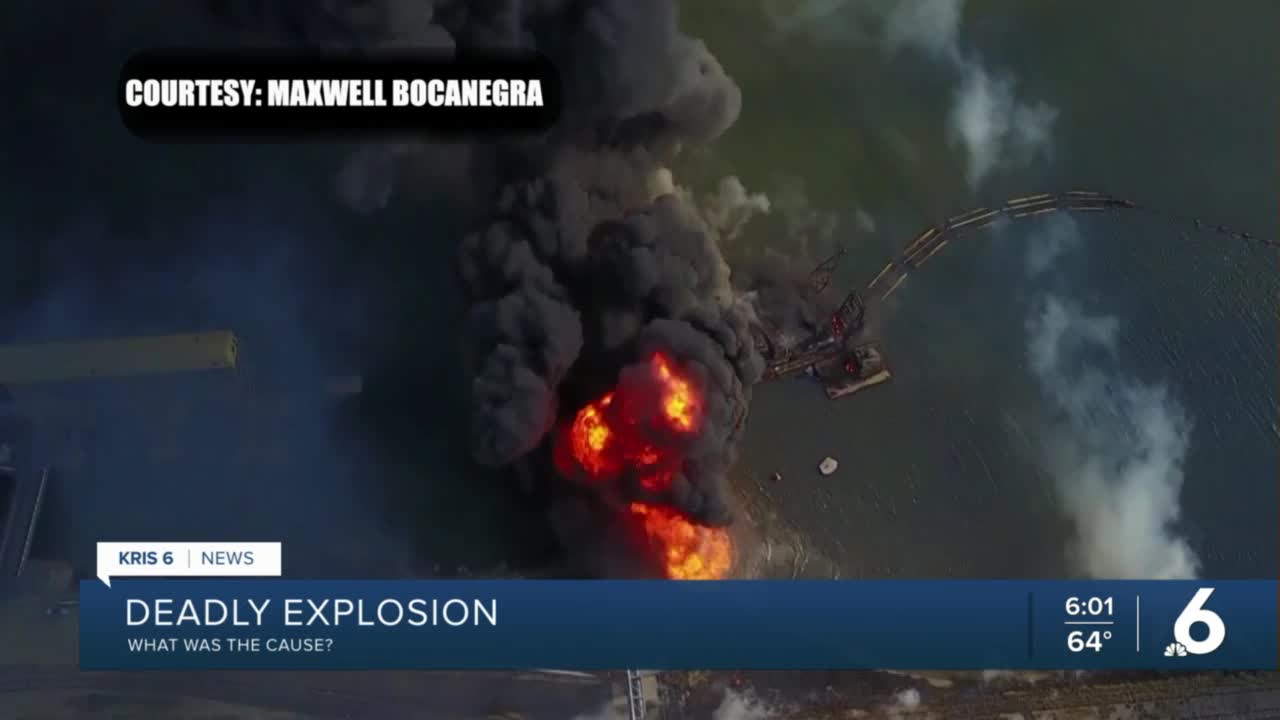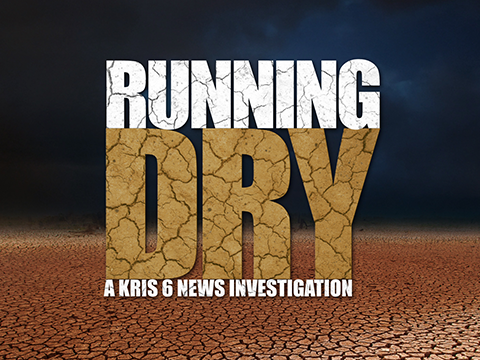CORPUS CHRISTI, Texas — An explosion that left four dead, six seriously injured and millions of dollars in damages has received a final review by the National Transporation Safety Board (NTSB).
The Waymon L. Boyd, owned by Orion Marine Group, struck a submerged 16-inch propane pipeline owned by Enterprise Products in October 2020.
In the review, the NTSB voted to accept the probable cause, major findings, and recommendations.
DCA20FM026 Abstract by Ryan Garza on Scribd
NTSB board chairwoman Jennifer L. Homendy told KRIS 6 News in an interview that the explosion was 100 percent preventable.
"That’s why I don’t like to use the word accident because it was preventable," Homendy said in an interview following the board meeting. "This was a terrible tragedy where lives were lost and as I mentioned serious injuries and families that are forever shattered."
Homendy says the investigation revealed problems that began before the one-call notification, which is designed to notify pipeline and utility companies when dredging and other work will be done in proximity to utilities.
"This situation began before the One Call notification, in the very beginning design stages where Snyder and Orion and Epic were meeting about the dredging plan and they had the TMI survey (a pipeline survey from 2018), they had talked about the pipeline but never invited Enterprise to the meetings," Homendy said. "The pipeline was not in any of the site-specific safety plans, there was no risk management program, it was not in the job hazard documentation or briefing. In none of the safety meetings, they did not discuss pipelines, even that morning in that safety meeting before they started work."
She says that throughout the project, into development, and then implementation of the project, it was if there was no discussion or thought of any substantive nature about the serious hazards that could result in a pipeline rupture.
"And the fact that there was so much misinformation along the way was just astounding," Homendy said.
Given these findings, the NTSB determined the probable cause of the hazardous liquid propane release, subsequent explosion, and fire in the Waymon L. Boyd was a result of "Orion Marine Group's inadequate planning and risk management processes."
Those processes failed to identify how close an Enterprise Products pipeline was to the dredging operation, according to the NTSB, and "resulted in the absence of effective controls to prevent the dredge's cutter head from striking the pipeline."
The probable cause also found deficient dredging plans provided by Snyder Engineering and Consulting, "which resulted in incomplete and inaccurate information communicated to Enterprise Products by Orion Marine Group during the one-call process, which resulted in insufficient measures to protect the pipeline from excavation damage."
We determined that the probable cause of this accident was Orion Marine Group’s inadequate planning and risk management processes, which failed to identify the proximity of their dredging operation to Enterprise Products’ pipeline TX219 and resulted in the absence of effective controls to prevent the dredge’s cutterhead from striking the pipeline. Contributing to the accident were deficient dredging plans provided by Schneider Engineering and Consulting, which resulted in incomplete and inaccurate information communicated to Enterprise Products by Orion Marine Group during the one-call process, which resulted in insufficient measures to protect the pipeline from excavation damage.
According to a report presented by investigators to the NTSB Tuesday morning, Orion Marine failed to work with the pipeline company to mitigate risks.
COVID-19 caused a cancellation of a meeting and incomplete and misleading dredging plans were provided to Enterprise. As a result, Enterprise believed Orion to be working outside the tolerance zone, according to the NTSB report.
Orion Marine employees, when interviewed by investigators had differing views on the distance to the pipeline and some were not aware it existed, according to the report.

The review of the accident revealed Orion Marine had access to a 2018 study that revealed the location of the Enterprise pipeline and Epic requested it be included in the drawings.
Following the accident, Orion Marine commissioned an independent mapping study and the pipeline was determined to be within inches of the 2018 map, according to the report.
Further, Orion Marine failed to input data into a computerized system that would have notified it that it was working too closely to the pipeline.
When questioned about the time it takes to input data into the computer system by NTSB member Michael E. Graham, investigators said that it took them about one minute to input the data.
"We look at the cutter head and that’s a large, heavy piece imperfect piece of machinery as you said in the presentation. And Orion failed to input the data," Graham said. "What a tragedy, I don’t understand why that wasn’t done."
Given the proximity to the pipeline, NTSB board members said the use of a cutter head would not have been appropriate for this dredging project.
The board made 10 safety recommendations as part of the investigation. While recommendations are just that, Homendy says close to 85 percent of recommendations made by the NTSB are adopted by the recipient and/or Congress.
The recommendations include three recommendations to the Pipeline and Hazardous Materials Safety Administration, one to Coastal and Marine Operators, two to Coastal and Marine Operators and the Council for Dredging and Marine Construction Safety, three to Orion Group Holdings, and one to Enterprise Products.
The safety recommendations seek for the companies involved in the accident to implement or update policies and procedures for dredging near pipelines, and for a federal regulator and industry organizations to develop additional guidance and training specific to pipeline protection for marine dredging projects and to establish tolerance zone guidance for marine construction and dredging projects near pipelines.
This is a developing story, stay with KRIS 6 News for updates.






